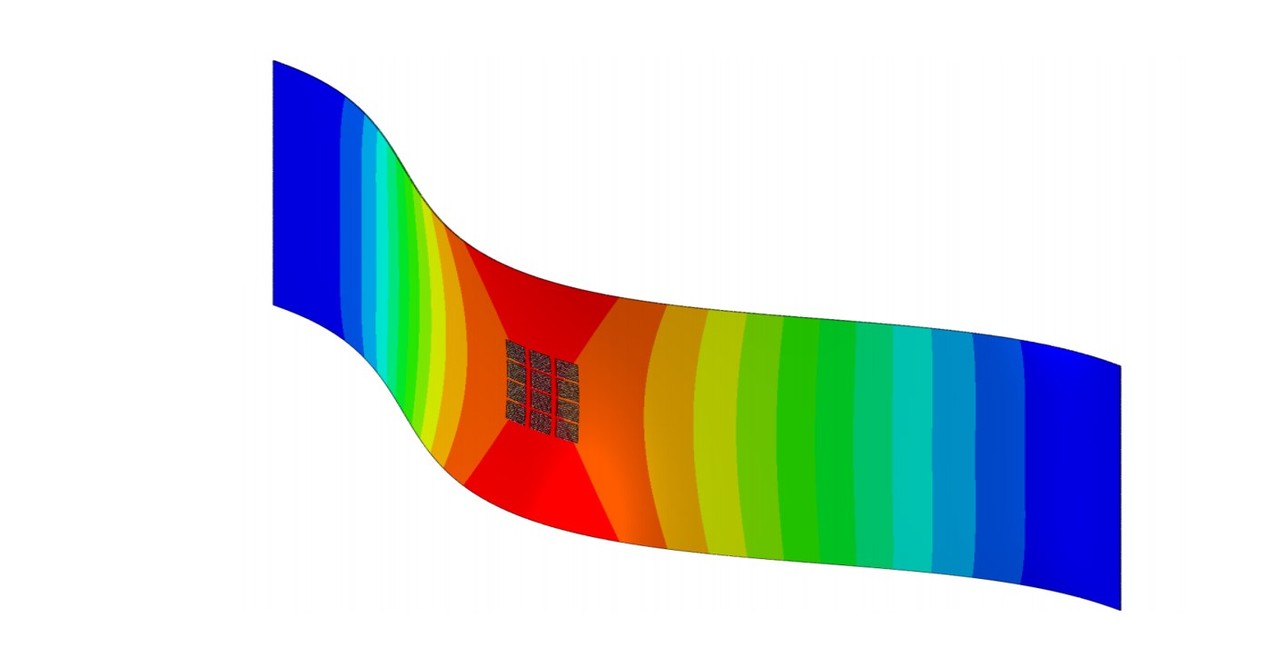The paper in Nature Biomedical Engineering is here: http://go.nature.com/2yHcerI
My research group, Conformable Decoders, at the MIT Media Lab is the interpreter for a language without words: a beating heart, neuronal activity in the brain or peristaltic forces in the gastrointestinal (GI) tract. They are all saying something important, speaking the unique language of the body. It is a linguistic that is completely different from the English that we speak every day – but it is one I believe we need to start translating genuinely. To this end, we are exploring novel materials, device designs and fabrication strategies to create micro- and nanoscale electromechanical systems with mechanically adaptive features, which allow intimate integration with the objects of interest. These systems enable us to collect and convert essential patterns into useful forms to gain insights into our body, and enhance interactions with nature and each other.
In our report just published in Nature Biomedical Engineering, we describe the development of a biocompatible, flexible, piezoelectric sensor that permits real-time, long-term gastric motility evaluation (Fig. 1). With a piezoelectric sensory interface mounted on a flexible substrate, our system yields voltage output due to mechanical deformations within the gastric cavity when conformably attached to the inside walls. It is the first system reported that evaluates ingestion status by monitoring gastric motility with a flexible electronic system. The flexibility of the microfabricated sensor allows it to attach to the interior of the gastric cavity conformably, and facilitates packaging inside a capsule by rolling. Importantly, its flexible nature has the potential to mitigate the risk of gastrointestinal obstruction. Given that the device can be electrically actuated, this system could become a template for subsequent gastrointestinal-tract stimulation devices. Future work will focus on incorporating an electromagnetic field-based wireless system for prolonged powering and communication with the device.

As a physicist, I am aware that motion is relative and can be defined as a change in the position of a body with respect to time and/or another body. Wherever there is motion, the Conformable Decoders are there; and if there is no motion, then we create the motion. Let me give you a snippet of information about piezoelectricity, the ‘magical motion’: in 1880, my scientific love Pierre Curie discovered the piezoelectric phenomena. What does piezoelectric mean? Piezo means stress, strain, or deformation. Electric means positive and negative charges. When a piezoelectric material is mechanically deformed, it can produce voltage and current, or vice versa.; if we apply an electrical field across a piezoelectric material, it deforms. Thus via these ‘magical’ materials, we can both create motion or sense the motion.
The other key point in our research is the formation of the device platform. Today’s electronics are up to six orders of magnitude stiffer than soft tissue. As a result, when you want to integrate electronics with biology, there are severe challenges related to mechanical and geometrical form mismatch. As we cannot change the biology, we focus on simple and elegant microfabrication techniques (and tricks!) to use piezoelectric materials and the required electronic components, which have the shape and the mechanical properties that match those of human tissues.
Video 1. Flexible piezoelectric devices for gastrointestinal motility sensing.
Under the umbrella of solid-state physics, and with the right material selection and required device formation, the applications are limitless. During my postdoctoral research activities in Prof. Robert Langer’s lab at MIT’s Koch Institute for Integrative Cancer Research, I established a unique, active, collaborative network between Massachusetts Institute of Technology, Harvard University and Prof. Langer’s established collaborator Prof. Traverso at Brigham and Women’s Hospital, Harvard Medical School. Prof. Traverso is a gastroenterologist and biomedical engineer with significant expertise in the development of novel systems for sensing and drug delivery. Our collaboration has further fostered my vision in piezoelectric devices and together we capitalized on my previous developments in piezoelectric mechanical energy harvesters1,2. In our work we demonstrated that a flexible piezoelectric sensor could function in the gastrointestinal tract and monitor gastric motility up to two days without any mechanical and electrical degradation.

Our paper: Dagdeviren, C. et al. Flexible piezoelectric devices for gastrointestinal motility sensing. Nat. Biomed. Eng. (2017) http://dx.doi.org/10.1038/s41551-017-0140-7.
References
1. Dagdeviren, C. et al. Conformal piezoelectric energy harvesting and storage from motions of the heart, lung and diaphragm. Proc. Natl. Acad. Sci. USA 111, 1927–1932 (2014).
2. Dagdeviren, C. The future of bionic dynamos. Science 354, 1109 (2016).
Banner credit: Dagdeviren, C. et al. Nat. Biomed. Eng. (2017). Macmillan Publishers.



Please sign in or register for FREE
If you are a registered user on Research Communities by Springer Nature, please sign in